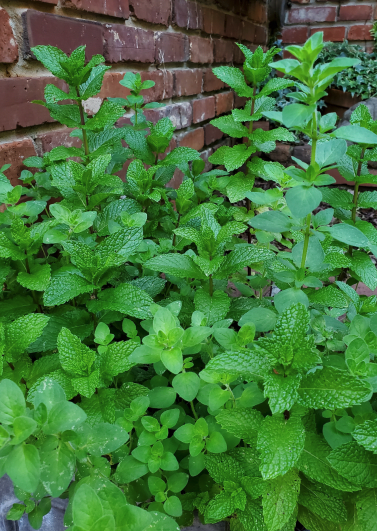|
Growing and Loving Herbs!
Herbs are one of the most satisfying and useful things you can grow. Fresh herbs from your yard are so much better than ones purchased at the grocery store, and after two or three snips, your plants will have paid for themselves and will continue to produce for months (and sometimes years!). Not to mention you will feel like Ina Garten as you cheerfully snip a few sprigs for your evening repast (or maybe Jacques Pepin if you are a dude). There are many types of herbs and many varieties of each kind available, but I am going to just cover my favorites for cooking for now. These are: basil, rosemary, oregano, thyme and mint. Okay I am also going to mention my second favorites: fennel (seed-head variety), chives (regular and garlic), and sage. Most of these are perennials, meaning that they will live in perpetuity (or something like that). All can be dried for winter use; this will also make you feel like a culinary rock star. What do herbs need to thrive? Lots of sun and excellent drainage. Plenty of water in the hotter months, of course. This makes herbs ideal for containers placed on a sunny deck or patio. They don’t require much fertility, just good well-draining soil and enough space to spread out. I find that most do well if they are first potted in fairly small pots and then “potted up” as they grow. Look for stocky, healthy plants of reasonable size, i.e. don’t buy puny or leggy plants. Look everywhere plants are sold for healthy specimens. Here are some random notes about a few favorites. Basil is a summer annual which needs very warm temperatures and needs replanting each year. It is easily grown from seed. The classic cooking variety for sauces and pesto is green (Genovese) basil but I also enjoy purple varieties and Thai basil. Keep them snipped back so they will have stocky growth. Once they flower and set seed the plants will decline. To dry basil cut long stems and tie with string and hang somewhere airy like a pot rack or laundry room. Try not to annoy your loved one with this. Rosemary is a fast-growing evergreen perennial. Look for the upright varieties. Rosemary needs stellar drainage and will get quite large over time. You can pick it fresh all year long but it will also dry well. It is delicious chopped and sprinkled over roast pork, beef or chicken. Or roast potatoes. Or in tomato sauce…You can see I like rosemary a lot. Oregano is also perennial and is a rampant grower that should only be grown in pots because it will take over your yard. There are a lot of varieties out there but I like the standard Oreganum vulgare (which btw does not mean uncouth, it just means common). It is also a wonderful herb to bunch and dry. I find the dried flavor is sweeter and more intense than what you can purchase at the store. Thyme, like oregano, is evergreen and perennial and is available in several varieties. My favorite, and the most versatile for cooking, is English thyme (T. vulgaris) but it is less commonly available than German thyme. Lemon thyme is also commonly available and has a pronounced lemon flavor. Thyme is another good drier which will have a better flavor than purchased thyme. Mint is a super easy perennial which will fight for dominance with oregano (and probably win) if grown in your yard (so use a pot). It dies back in winter but will spring to life as the weather warms. It roots very easily in water, so to make more plants, just cut a few stems, place in water in a sunny location, and repot in soil when the roots are a couple inches long. (You can also do this with basil). There are typically several varieties of mint available for sale and it’s personal preference. If you are unsure which you like best you can furtively pinch off a leaf at the nursery, rub between your fingers, and smell it. I am a spearmint gal myself. Mint is a great pass-along plant so the best way to get it is to ask a friend for a cutting. Odds are they have way more than they need and will happily share. The last thing about herbs I will share is they make wonderful foliage in flower bouquets and the lower growing varieties look great mixed with flowers in window boxes or pots. Go get some!
|






